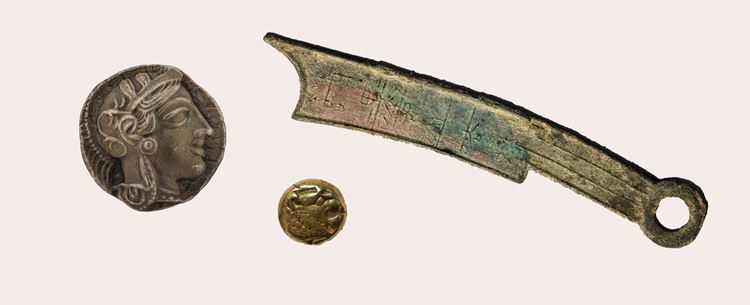The Smithsonian’s National Numismatic Collection is thought to be the world’s largest of its kind
Hidden among the varied wonders of the Smithsonian Institution’s National Museum of American History in Washington, DC, is an unassuming, storage-cabinet-filled room, known as “the vault,” home to an estimated 1.6 million forms of physical money and transactional objects.
This is the National Numismatic Collection (NNC), believed to be the world’s largest collection of its kind, featuring historical artifacts from around the world as well as the United States. Ellen Feingold, curator of the NNC, says these items “represent every inhabited continent, and they span more than 3,000 years of human history.”
A small sample: a tiny electrum coin, the size of a stud earring, from 7th–6th century BCE Lydia, in present-day Türkiye. From China, a 2,000-year-old example of “knife money,” a bronze, knife-shaped piece of money designed not for practical use but to represent something of value, and a 14th century Ming Dynasty–era banknote. Early banknotes from the American colonies, with their wide variety of motifs and inscriptions (including “'Tis Death to counterfeit”), and personal checks signed by early US presidents.
Early coins and knife-shaped
money from ancient Greece,
Lydia, and China are included
in the National Numismatic
Collection in Washington, DC.
The collection's obsolete US banknotes feature diverse imagery beyond the typical Founding Fathers or Lady Liberty, according to Feingold. “You see symbols of industry, like shipbuilding and trains. You see a woman milking cows and a child snuggling bunnies. You see images that are respectful and thoughtful, and others that are degrading and inappropriate from our lens,” including depictions of slavery or stereotypical images of indigenous communities, she says.
As the world grows increasingly digital, there are lessons to be learned from these collections of physical money, Feingold believes. These artifacts reveal insights not only into political history but also into cultural ideas related to values, trust, artistic beauty, and collective identity. She points out a 5th century BCE coin from ancient Greece: “This has the owl, who represents Athens. And on the other side, you will see Athena. Athens is using the coins to say, ‘This is who we are; this is our patron goddess.’ This is a really meaningful step forward in how a community represents itself and uses money as a way to do that.” She also says that the types and quality of materials used offer a glimpse into the economic health of past societies.
The NNC’s vault is accessible to researchers by appointment, and the collection is being gradually digitized. Selected items from the collection are on public display in the museum’s exhibition “The Value of Money”—featuring a tire-size stone ring from the island of Yap in Micronesia—and “Really BIG Money,” an exhibition for children.
Opinions expressed in articles and other materials are those of the authors; they do not necessarily reflect IMF policy.









